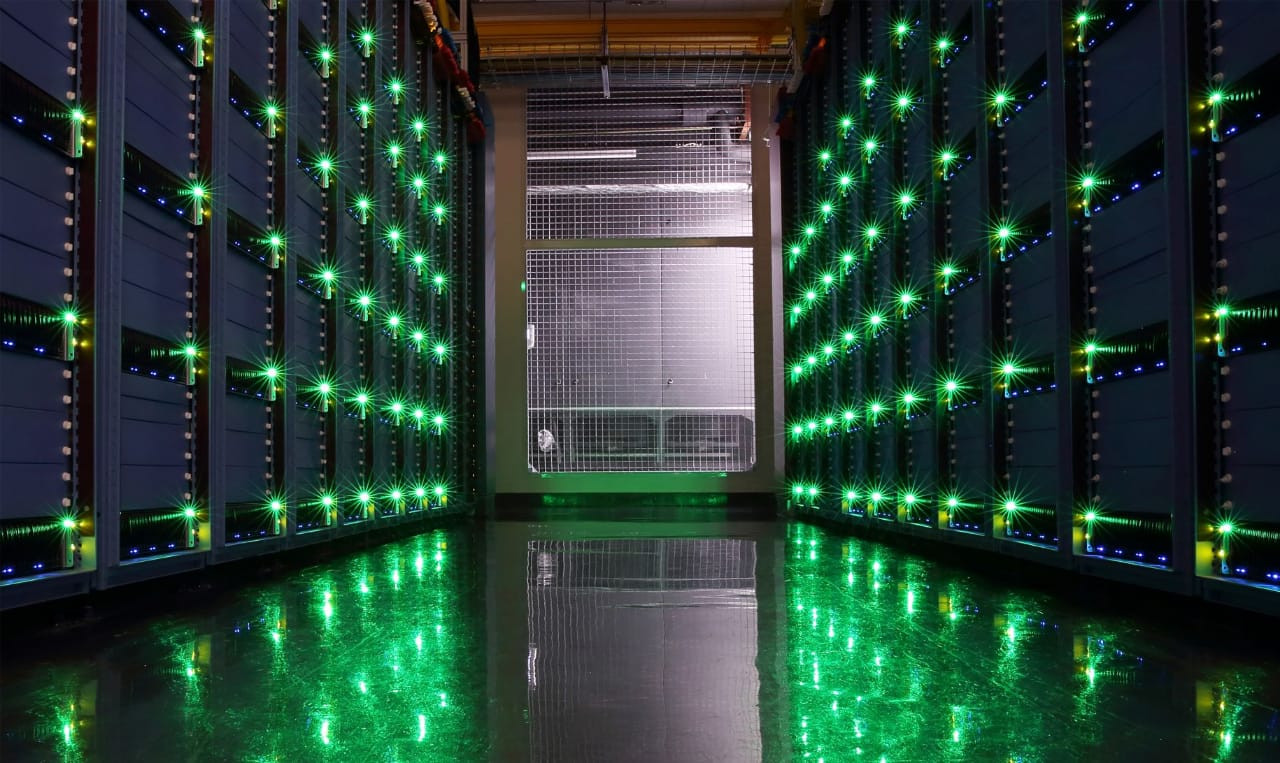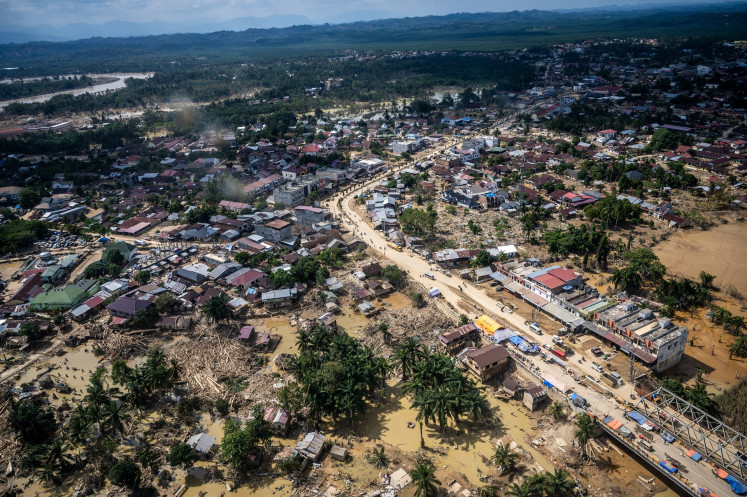Popular Reads
Top Results
Can't find what you're looking for?
View all search resultsPopular Reads
Top Results
Can't find what you're looking for?
View all search resultsIndonesia’s path to be a global leader in green data centers
A study by the Indonesian Internet Service Providers Association revealed that almost 60 percent of users spend between two to eight hours on the internet daily.
Change text size
Gift Premium Articles
to Anyone
F
or many of us, online access has become ingrained in our daily lives. The pandemic has accelerated the move to a digital lifestyle of working, studying, connecting with loved ones and relaxing – and the “new normal” looks set to stay for the foreseeable future.
Our digital lifestyle has undoubtedly resulted in higher Internet traffic and shifted the demand dynamics for data centers. In Indonesia alone, there are over 200 million internet users and that number is expected to increase. A study by the Indonesian Internet Service Providers Association revealed that almost 60 percent of users spend between two to eight hours on the internet daily. On top of that, Indonesia’s e-commerce market has emerged as the largest in Southeast Asia, accounting for nearly 50 percent of the region’s total market size.
Just consider the volume of video calls, streaming services, multiple messaging and e-commerce applications, and social media channels in use during a day. Imagine the amount of data that is created every second.
Have we considered the energy needed to capture and manage the deluge of data we generate and consume in our business dealings and private lives?
As the backbone of the Internet, data centers store, move, process and analyze the data needed to power any online service. A data center is also an energy-guzzling facility, with nearly 40 percent of energy going to its cooling systems to maintain a temperature-controlled environment round the clock. Estimates further suggest that data centers account for up to 5 percent of global greenhouse gas emissions.
Just as your laptop heats up with heavy usage, server racks housing computing equipment in a data center emit heat when handling more data, thereby needing an efficient cooling solution. A fully efficient data center is one that requires one kilowatt of energy to cool the servers for every kilowatt of power used by these servers. That is not possible in reality due to the inevitable energy wastage and non-computing electrical installations, including air-conditioning and lighting.
Indonesia has recently been a hotspot for data center investment. According to market research by Arizton, the country is expected to bring in investments worth over USD 1 billion at an annual growth rate of 11 percent between 2019 and 2025.
Well-known technology companies including Google, Microsoft, Amazon Web Services, Alibaba and Tencent have already set up data centers in Indonesia, or have announced plans to do so. We can only expect more companies to follow in their footsteps.
Against this backdrop, can data centers be carbon-neutral, or even net carbon-negative? Are green data centers a paradoxical concept?
Data center operators are working to drive down energy consumption to advance sustainability in their facilities and decrease costs. One way is to invest in energy-efficient commercial chiller equipment that offers competitive energy performance and proven reliability. Smart buildings technology providers like Johnson Controls offer advanced chiller equipment, which uses low global warming potential refrigerant and is optimized to reduce average annual electricity consumption by 35 percent. To push the envelope further, data center providers could even consider harnessing free-cooling chiller solutions, which include evaporative cooling technologies for even better energy efficiency.
Using digital resources and analytics is another way to optimize energy usage. In a typical data center, the servers’ load will vary throughout the day. A smart solution to monitor the energy consumption patterns allows data center managers to configure the optimal use of their resources, as well as to identify and diagnose equipment problems and take proactive steps to fix them. In some cases, smart chillers can reduce unplanned and emergency repairs by as much as 66 percent.
It’s also time to challenge the convention of operating data centers at low temperatures of 20 degrees to 22 degrees Celsius. Evidence supports the running of data centers hotter than they currently are (by 1 or 2 degree without any significant sacrifices in system reliability - and reap up to 5 percent savings in power consumption for chillers.
Sustainable energy sources should be considered to power data centers, wherever possible.
Finance Minister Sri Mulyani Indrawati projects the digital economy in Indonesia could increase to US$124 billion by 2025. Coupled with the government’s “Making Indonesia 4.0” roadmap which will put Indonesia among the top ten global economies by 2030, we can see the tremendous potential that the country has. By implementing digital transformation in various industries, this will inevitably drive the need for more data centers.
Indonesia certainly has a tricky job to balance being a data center hotspot while juggling to have data centers with low emissions.
The whole process of developing data centers needs to be reconsidered – starting with power usage and efficiency needs at the design stage, and not towards the completion of the build, or when it’s time to retrofit the building.
What type of data centers do we want to see being built in Indonesia in the future? Data center builders and owners have to face a tough question: Will they be part of the solution, or will they exacerbate the problem?
Sustainability concerns, coupled with advances in cooling and heat management technology, have shifted the way data centers are being designed, managed and maintained. We are seeing some headways in that direction – and that should be the way forward. Otherwise, we’ll be sacrificing our future to fulfil our insatiable need for data consumption and connectivity.
***
The writer is director, data center vertical market, Asia Pacific, Johnson Controls.









